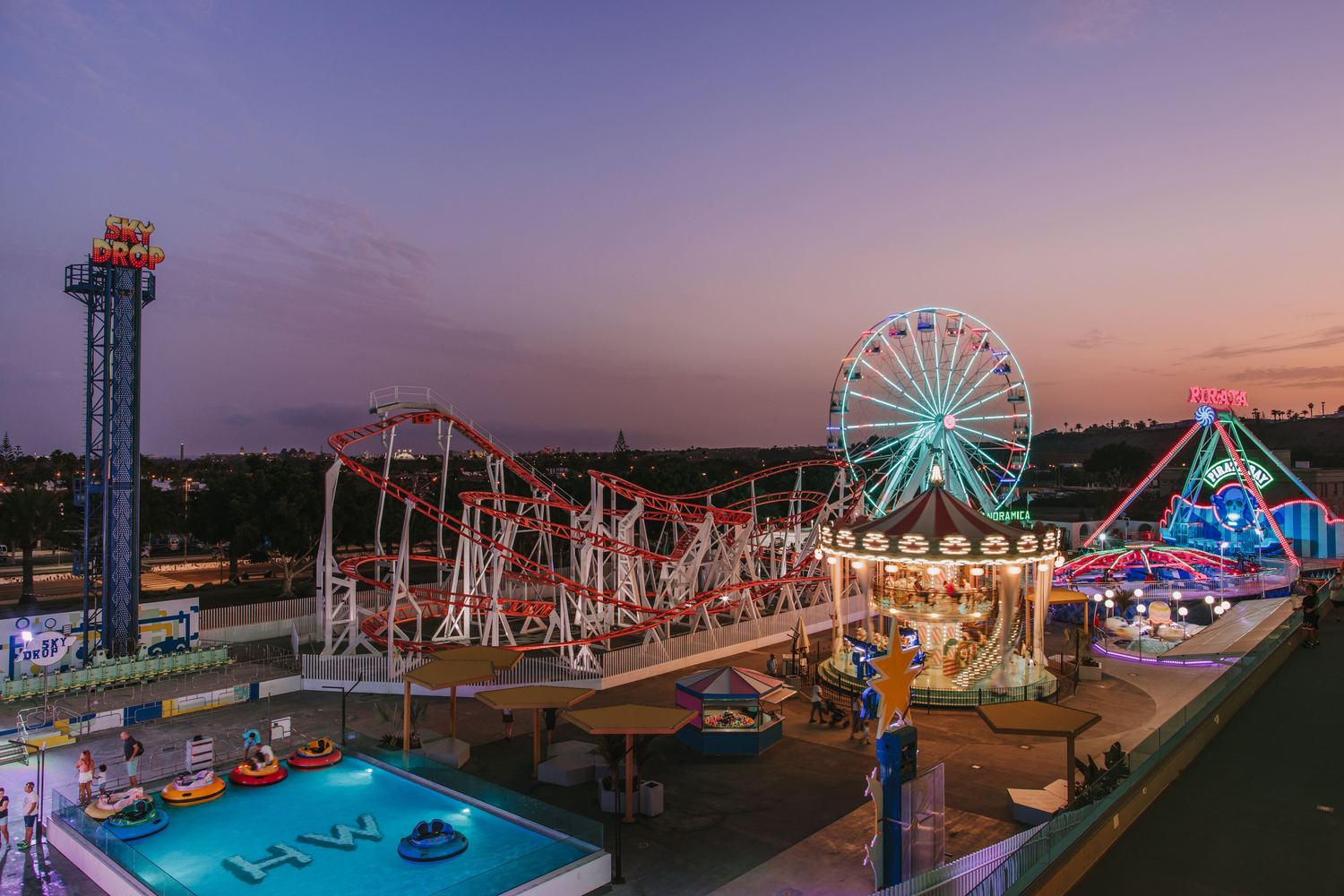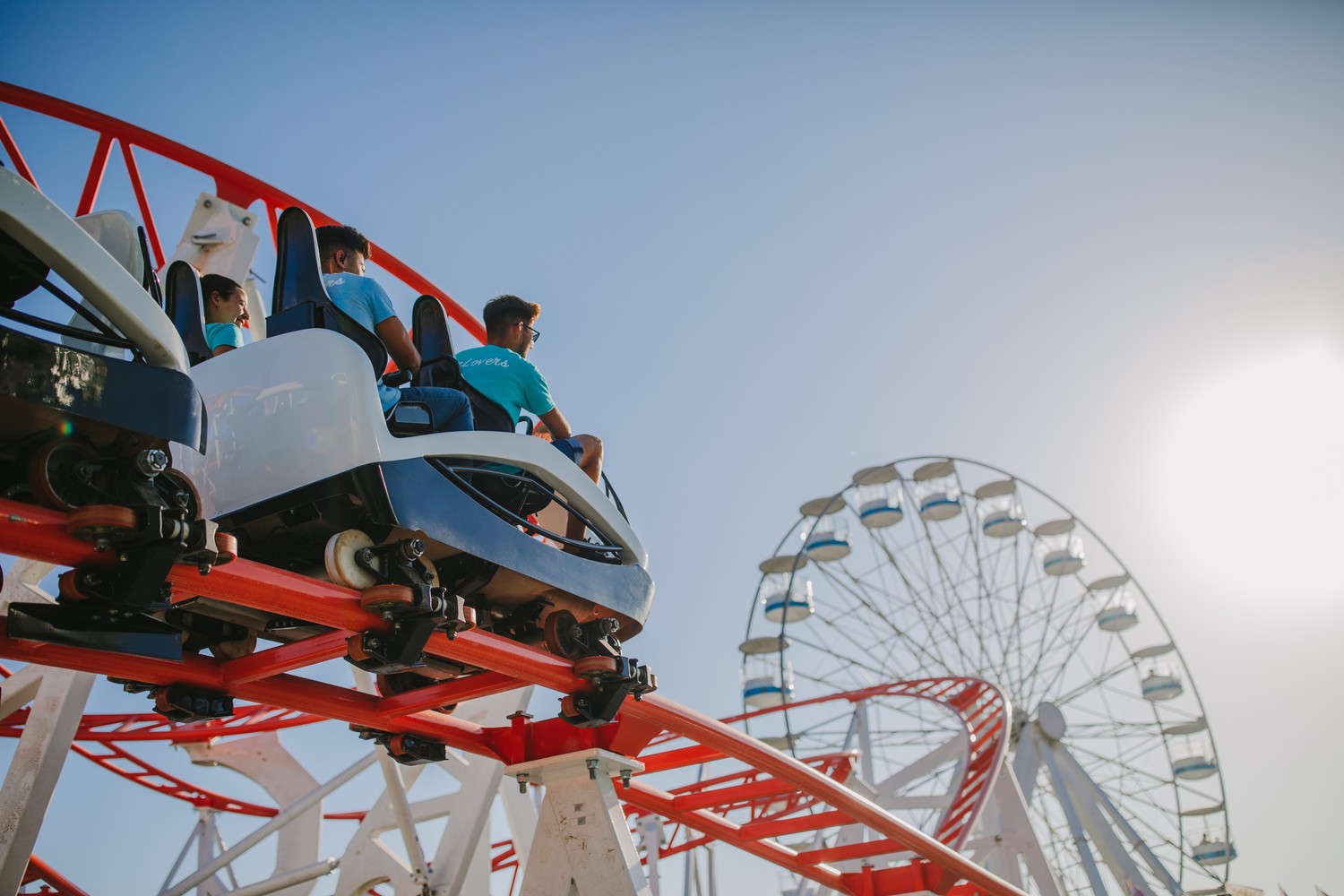When we talk about an amusement park, there are representative spaces or places that quickly come to mind. The Ferris wheel, the bumper cars, the bulls… or, without a doubt, the roller coaster. Few attractions are as exciting as a roller coaster. And roller coasters are designed to feel risk, as well as speed, air-times and G-force. A risk, in any case, controlled and completely safe for all those who decide to have fun on them. Roller coasters are truly iconic, a symbol for many locations, and for more than a century they have fanned the flame of a popularity that continues to grow to this day.
Origin and history of roller coasters
Many think that the origins of the roller coaster are in the United States, but this is not the case. Historically, the roller coaster owes its name to the amusements developed during the winter in Russia, where there were large wooden slides that were descended with sliding sleds on the snow. Ironically, the Russians call it Amyerikánskiye gorki or “American mountain”. It was in St. Petersburg, where a group of people came up with the idea of putting together several sleds to slide down an ice rink full of ups, downs and curves. A ladder was needed to climb the structure. This new form of amusement was so successful that Catherine II the Great, Empress of Russia, had several built in her garden. By the middle of the 19th century, roller coasters were really popular in courtyards and upper-class homes.
French soldiers visiting the city during the Napoleonic wars exported the idea to their country. From then on, they were also known in France, where they added train carriages to disused tracks, and it was the French who called this invention: “The roller coaster” (“Les Montagnes Russes”), and there they came up with the idea of introducing wheels to improve it. Then they started using disused rail cars to test this new attraction. Finally, they came to the United States, where they are called roller coasters, and are a popular attraction designed for fairs, amusement parks and theme parks.

What is a roller coaster?
Structurally, we can say that a roller coaster is a type of attraction consisting of a system of rails, which form one or more tracks that go up and down in specifically designed circuits. Trains slide along these rails, which in turn are made up of carriages, in which the passengers travel, suitably restrained. The trains generally ascend by means of a motor-driven chain or cable and then descend by the effect of gravity, causing acceleration with the aim of amusing and frightening the passengers. Marcus Adna Thompson patented the first roller coaster on 20 January 1885 made from old trolleys attached with chains. These early roller coasters were used by the railway companies to provide entertainment on weekends when there were fewer passengers. In a way, it was the Americans who created the concept we now associate with roller coasters. Gradually, roller coasters began to spread around the world.
Famous roller coasters
Among the most notable were “The Cyclone”, created in 1925, which was the first to reach a height of 100 metres, and “The Mine Train”, which included an underwater passageway, a sensation by 1966. Throughout the 20th century, roller coasters continued to proliferate, grow and improve. In the 1950s, tubular steel rails were introduced. Nylon or polyurethane wheels cover the top, bottom and sides of the tube, securing the train to the track as it travels through intricate loops and turns. And at the turn of the century (1992), the first inverted ride is built: the tracks are above the heads of the visitors and their legs dangle in the void. This is Batman: The Ride, which reaches 10 stories high.
Types of roller coasters
Today, there are dozens of types of roller coasters, such as:
- Steel
- Water
- Hybrid
- Inverted
- Spinning
- Suspended
- Four-dimensional
- Floorless
These are just some of the categories of roller coasters found in parks and fairs around the world, which has led to a new classification not only by design and type of track and train, but also by height. For some years now, manufacturers have been opting for more daring designs, defying all the laws of physics and offering a more thrilling experience to users. Nowadays, the evolution of roller coasters allows us to attend real shows of adrenaline and emotion.

Which is the best roller coaster in the Canary Islands
At Wooland Fun Park, the amusement park of Holidayworld Maspalomas, we know that you love roller coasters, and that’s why we have a very special one for you: the only roller coaster you can find in all the Canary Islands. Do you dare to try it? For the more adventurous. Let yourself be carried away by the fun at 60km/h and 18m high. Remember: “Life is like a roller coaster. You can scream at every bump or raise your arms in the air and enjoy the ride”, that is one of the many sayings that take advantage of the ups and downs and twists and turns that characterise this fairground attraction to reflect on weighty matters. We encourage you to experience it with intensity and, of course, at Holidayworld Maspalomas, all the excitement awaits you at our leisure centre!
About Holidayworld Maspalomas
HOLIDAYWORLD MASPALOMAS is the most complete leisure centre in the Canary Islands. Located in the south of the island, it is an amusement park with more than 11,000 square metres of fun: bowling, karaokes, escape rooms, sportsbar… and much more! In addition, the NOMAD Gastro Market offers you the flavours of the world under one roof, 14 gastronomic concepts in the purest “Street Style” style with more than 400 culinary proposals, as well as a wine, beer and cocktail bar. Don’t miss the opportunity, HOLIDAYWORLD MASPALOMAS wants you to live unique experiences! JOIN the JOY!